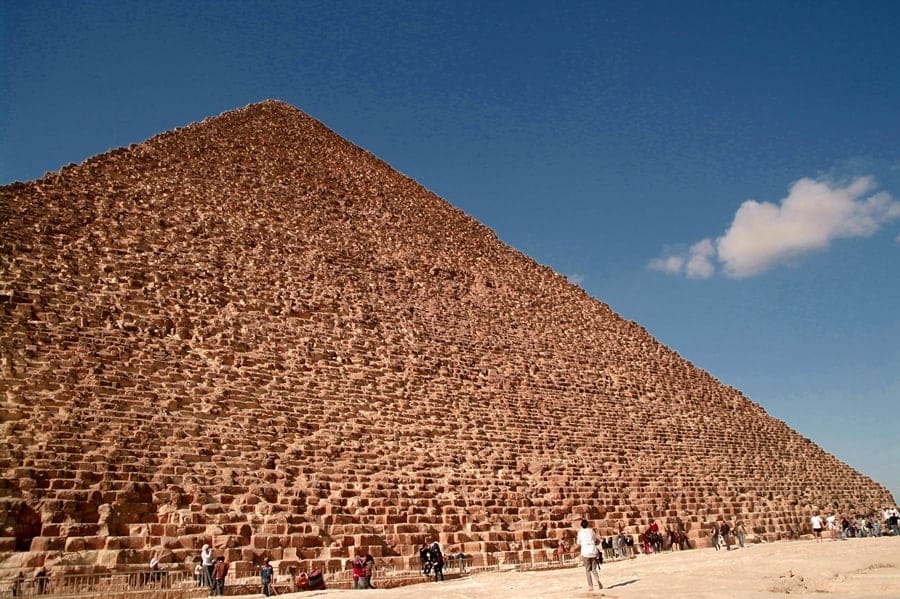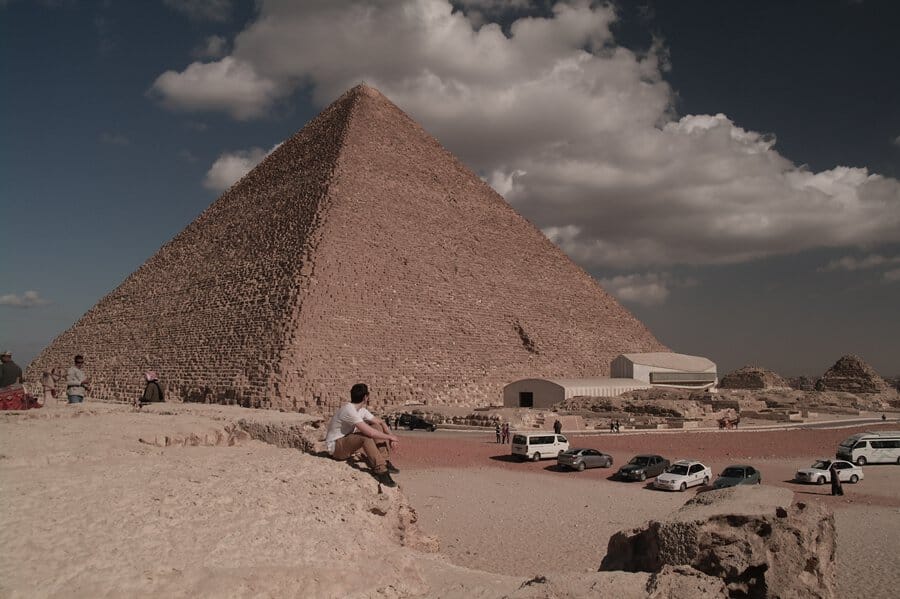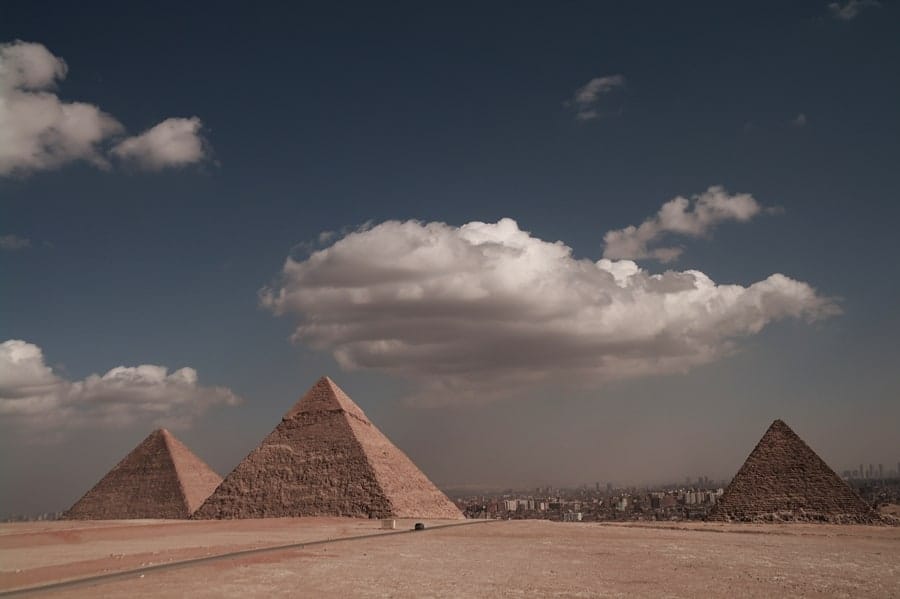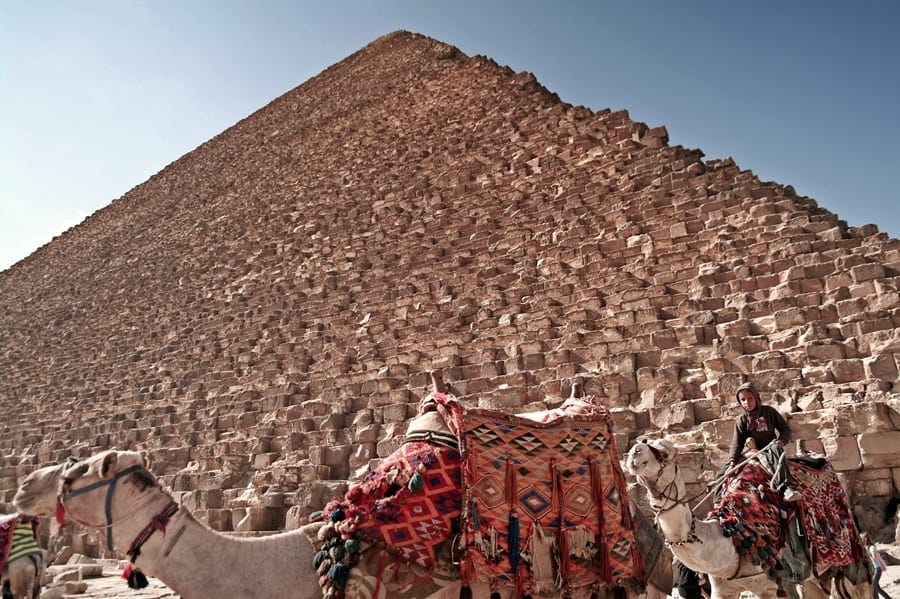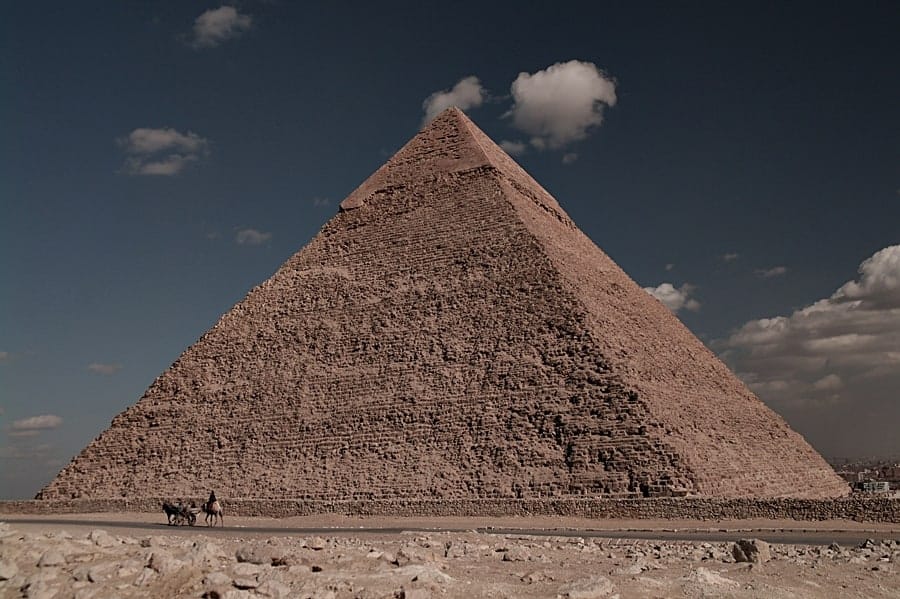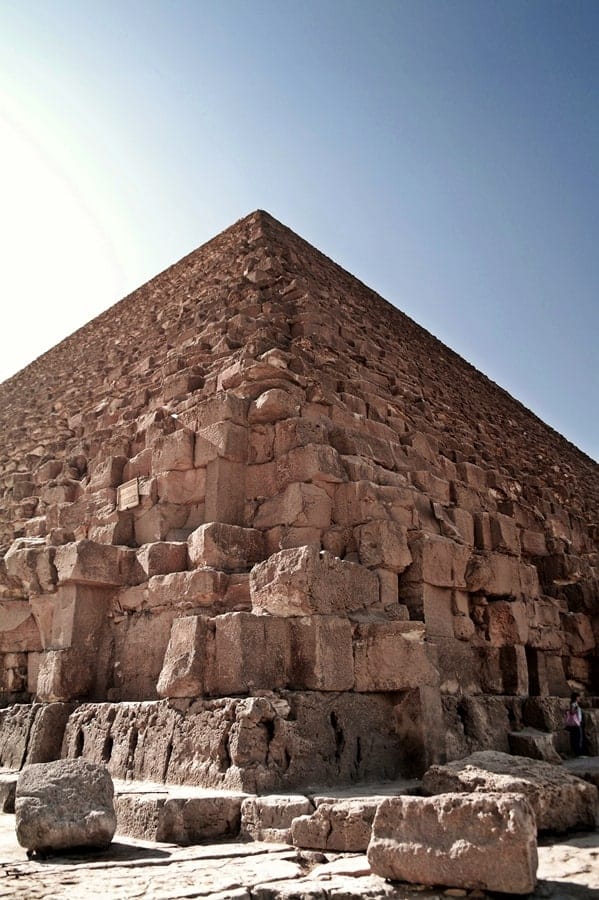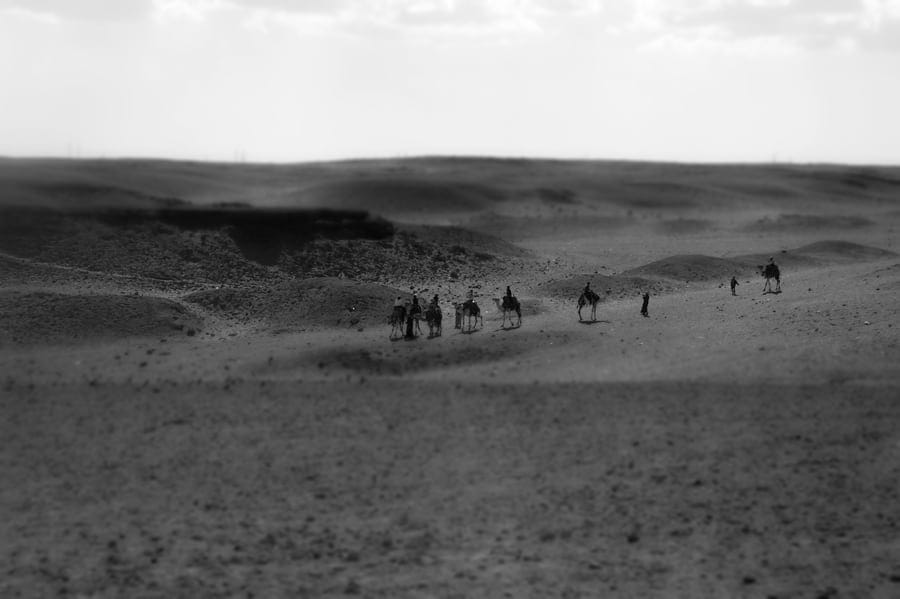I had been looking forward to this day for a very long time. The world famous 4,500 year old Pyramids of Giza are something that everyone studied at school and one of the subjects I enjoyed the most.
Pyramids of Giza
I wrote a post before we left for Egypt about my fears that Egypt and its amazing sights might not live up to the expectations I had floating around in the empty space I call my head.
So when Peter, our awesome Egyptologist and tour guide, said we were headed to the “Big 3” on the first day of our 10 day tour through Egypt, I was anxious to say the least. For 45 minutes we honked, bumped and zig-zagged our way through the madhouse traffic with the others passengers jabbering like excited howler monkeys.
I sat in stony silence.
My silent pondering was broken by a single word…
“Look!”
That first view is a little mind-boggling. Here I was thinking that we would be driving through a sandy wasteland desert. Instead we were on the main-highway in the middle of Cairo and there were the Pyramids of Giza towering above tower blocks and homes less than 100m from their backyard fences.
Built 4,500 years ago in the middle of the desert Cairo has expanded at an alarming rate as 22 million people cram into the City centre. Land is at a premium and thus the closeness of the Pyramids.
As we neared them we began to realise just how large they were. With approximately 2.3 million roughly hand-chipped and carved stone blocks, each weighing in around 2 – 3 tonnes, the Pyramids of Giza make an impressive sight. The orange stone reflects the bright sunlight in just the perfect way to create some amazing contrasts between the dazzling blue sky backdrop.
The three Pyramids were built in succession for the tombs of Cheops, his Son Khafre and his Grandson Menkaura.
The largest, the aptly named Great Pyramid built for Cheops, actually looks slightly smaller than Kharfre Pyramid. This is because King Khafre built his Pyramid at a much steeper angle creating the allusion that it is larger and thus dominates the dark blue skyline from all angles.
In fact, there are actually over 120 Pyramids in Egypt but these are definitely the most well known. Pyramids were actually built originally to show-off each Kings wealth and “God-like” statuses. Unfortunately, having 146.5m high pyramids is also a beacon for grave robbers. Very quickly they were stripped off their wealth and the Egyptians learned to bury their dead in tombs underground such as in the Valley of the Kings.
Walking towards their bases the sun is quickly obscured and shadows stretch across the sun scorched earth. The usual touts and souvenir sellers hound you even here but I only have eyes for the Pyramids of Giza.
Squinting into the sunlight as you look skywards each block reached at least chest to head high in size. Unfortunately they have now stopped letting tourists clamber all over them. Realistically this is actually a good thing so that we don’t ruin them forever and even being able to touch the smooth stones under your finger tips is incredible.
Wandering around the base of the Great Pyramid takes at least 15 minutes. While each pyramid is set several hundred metres apart. Near each pyramid there are also smaller pyramids, often referred to as the Queens Pyramids, that were built for the wives of each ruler. Contrary to popular belief they were not killed when each ruler died!
To get a better view we were all ushered onto the bus again and driven to the look-out point a short distance away. Here you also have the chance to jump on the back of a camel and ride back across the desert to the smallest of the three Pyramids of Giza.
Looking back across the desert towards the Pyramids staggered in a diagonal line with the city of Cairo spread out behind them is one sight that I will never forget.
And being up close and personal with such old history is a rare thing for a New Zealander as we only have a couple of hundred years of history compared to several thousands here in Egypt.
